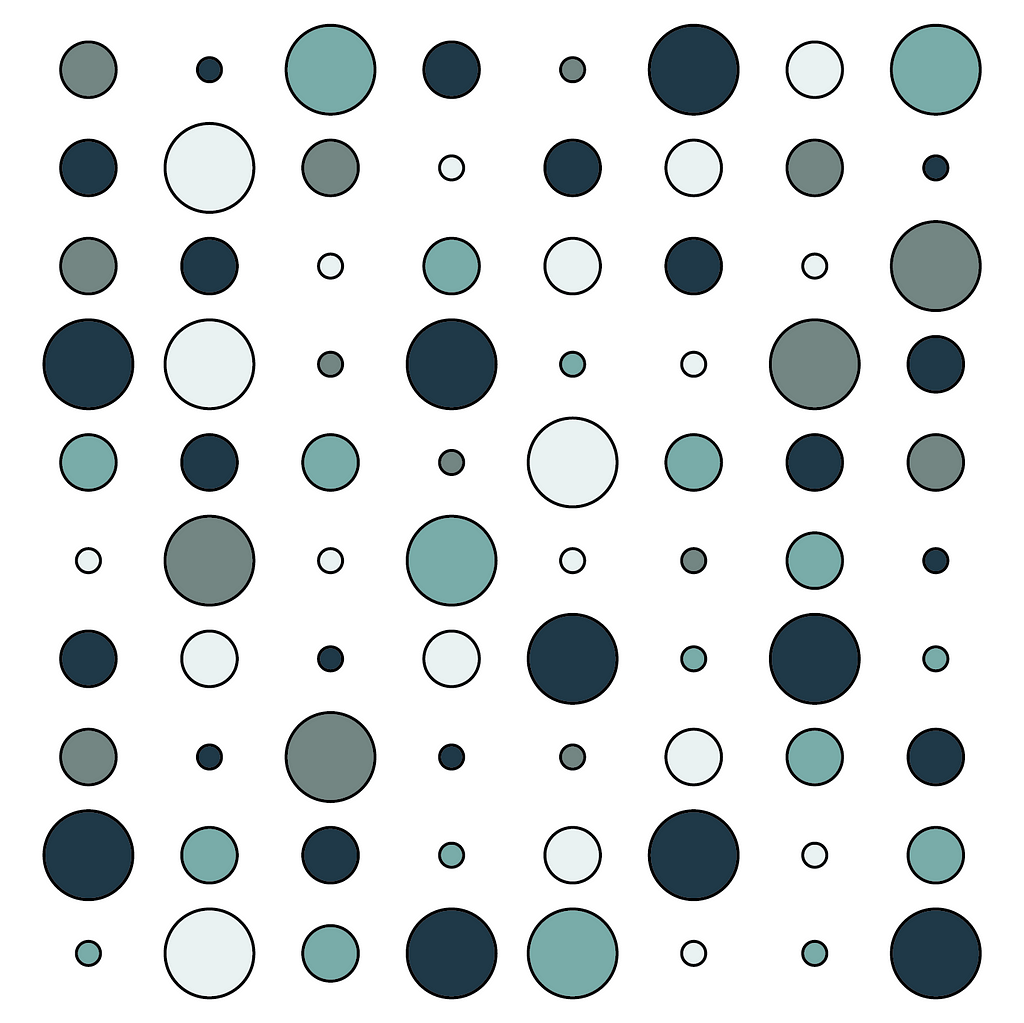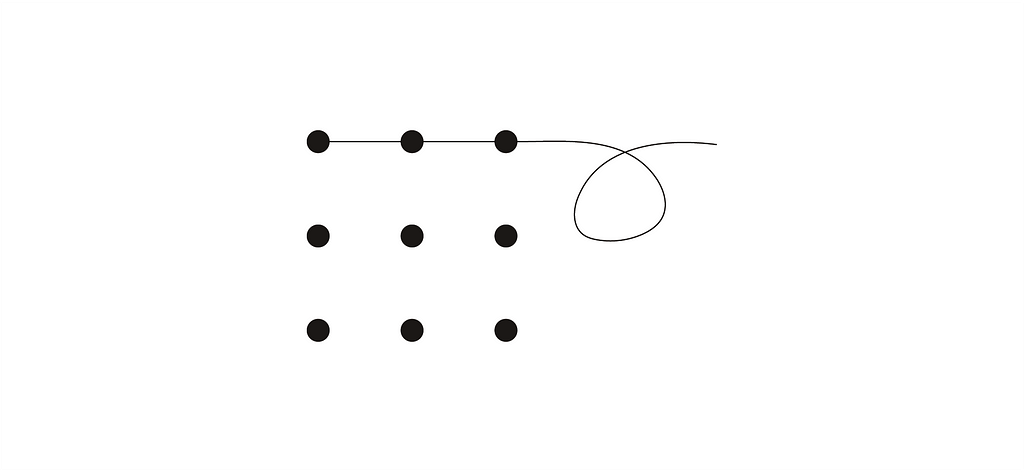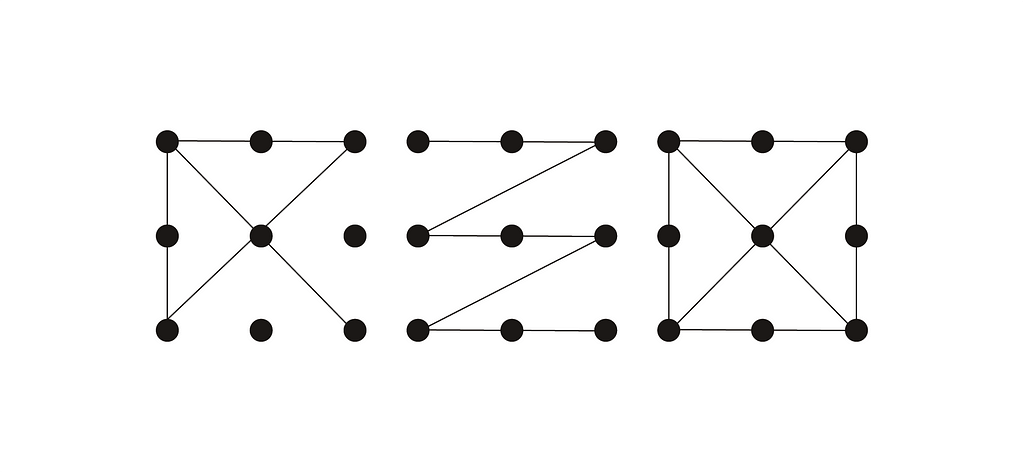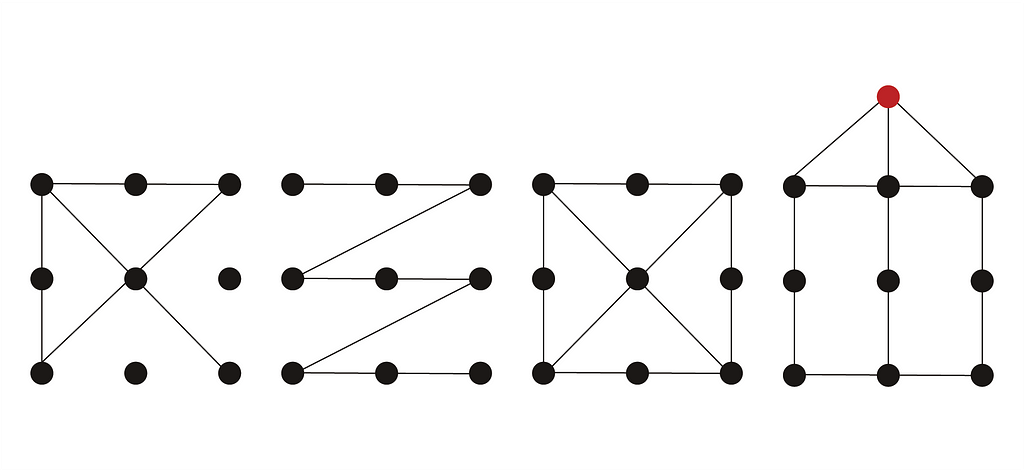DESIGN
Enhancing your design skills by adding more dots

Almost thirty years ago, Steve Jobs gave an interview to Wired where he came up with one of my all-time favourite quotes about creativity:
“Creativity is just connecting things. When you ask creative people how they did something, they feel a little guilty because they didn’t really do it, they just saw something. It seemed obvious to them after a while.
That’s because they were able to connect experiences they’ve had and synthesize new things. And the reason they were able to do that was that they’ve had more experiences or they have thought more about their experiences than other people.”
As someone who works in design, this is a concept I’ve thought about a lot over the years, and this is how I visualise it:
Imagine a huge wall covered in thousands of dots. Each dot represents a piece of knowledge that you’ve acquired. In your hand you have a ball of string, and you wind the string between the dots to create patterns. Connecting the dots in a new way is creativity.

Unfortunately, you find yourself recreating patterns that other people have created before. “Everything original has already been discovered”, you think. Perhaps you’re right. With a limited number of dots, after a while, you end up weaving the same old patterns.

The answer, then, is to add a new dot. Ideally, it is something unexpected that doesn’t fit with the other dots at all. And voila! Suddenly, you have the ability to weave a new pattern.

The beauty of this idea is that the new dot can be absolutely anything at all. In fact, the more unusual the new dot is, the more creative the pattern you can weave around it.
This brings us to the findings of the UC Berkeley creativity study. I’ve talked about it in more detail in a previous article, but here I want to focus specifically on the sort of childhood experienced by the creative geniuses in the study.
The most creative people had, as it turned out, been encouraged from childhood to think outside the box.
They were raised to be independent and autonomous, constantly questioning, and confident in exercising their own judgement and curiosity. Essentially, in terms of the “dots” analogy, they refused to accept the selection of dots they were presented with. Instead, they were able to trust their own judgement and add more dots as and where they saw fit, thus resulting in their ability to weave more original patterns.
One of the best examples of the “dots” theory is the invention of Post-it notes. Spencer Silver discovered a very weak universal glue in 1968, but it wasn’t until 1974 that Art Fry, a fellow scientist who sang in a church choir, realised that the glue was ideal for sticking paper bookmarks on his sheet music. Someone who was solely a scientist and not also a singer would probably not have made this connection.
There are, of course, a multitude of other examples:
- The NASA engineer who couldn’t figure out how to fix the distorted lens on the Hubble Space Telescope, until he travelled to Germany and experienced using an adjustable shower head, which led him to design articulated arms to install corrective mirrors inside the telescope.
- The Swiss inventor who enjoyed hiking and noticed that the tiny burrs which got caught on his clothes were covered in hooks, subsequently leading him to invent Velcro.
- The manufacturer of cleaning products who was related to a nursery teacher and thus discovered that his wallpaper cleaning putty could be used to create models, after which he renamed the product “Play Doh”.
What they all have in common is a main area of expertise which was enhanced by having “additional dots” from other interests and connections, thereby enabling them to come up with creative ideas where the two domains collided.
As an experiment in enhancing design creativity, I’d like to suggest Edward de Bono’s Random Input technique. Essentially you find an extra dot — a word or idea which has no connection with your current situation — and put the two together, then use the juxtaposition to generate inspiration. The example de Bono gives is Photocopier → Nose which leads to the idea of scented toner cartridges.
The key to applying de Bono’s method is not to cherry pick the extra dot — it needs to be genuinely random if the method is to succeed (if you consciously choose the dot you are likely to choose something that fits within the same old pattern, instead of breaking out of it). This approach essentially pushes the mind in a different direction and encourages original thinking, which leads to the generation of a variety of new ideas.

Spot On was originally published in UX Collective on Medium, where people are continuing the conversation by highlighting and responding to this story.

Leave a Reply